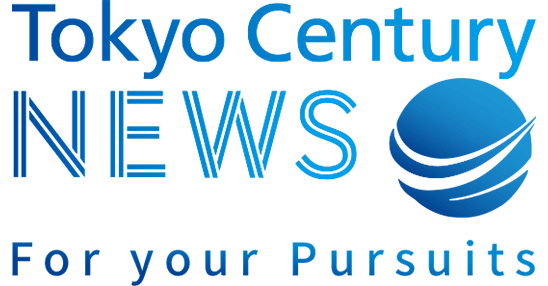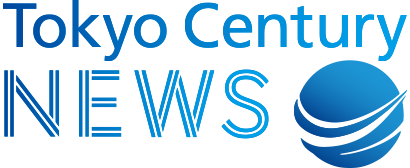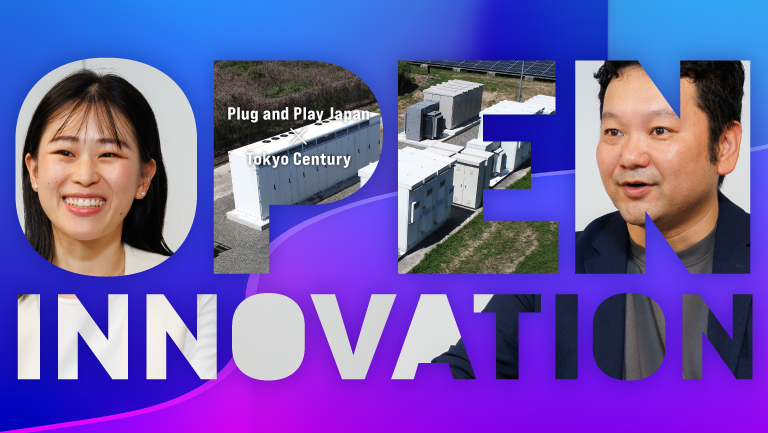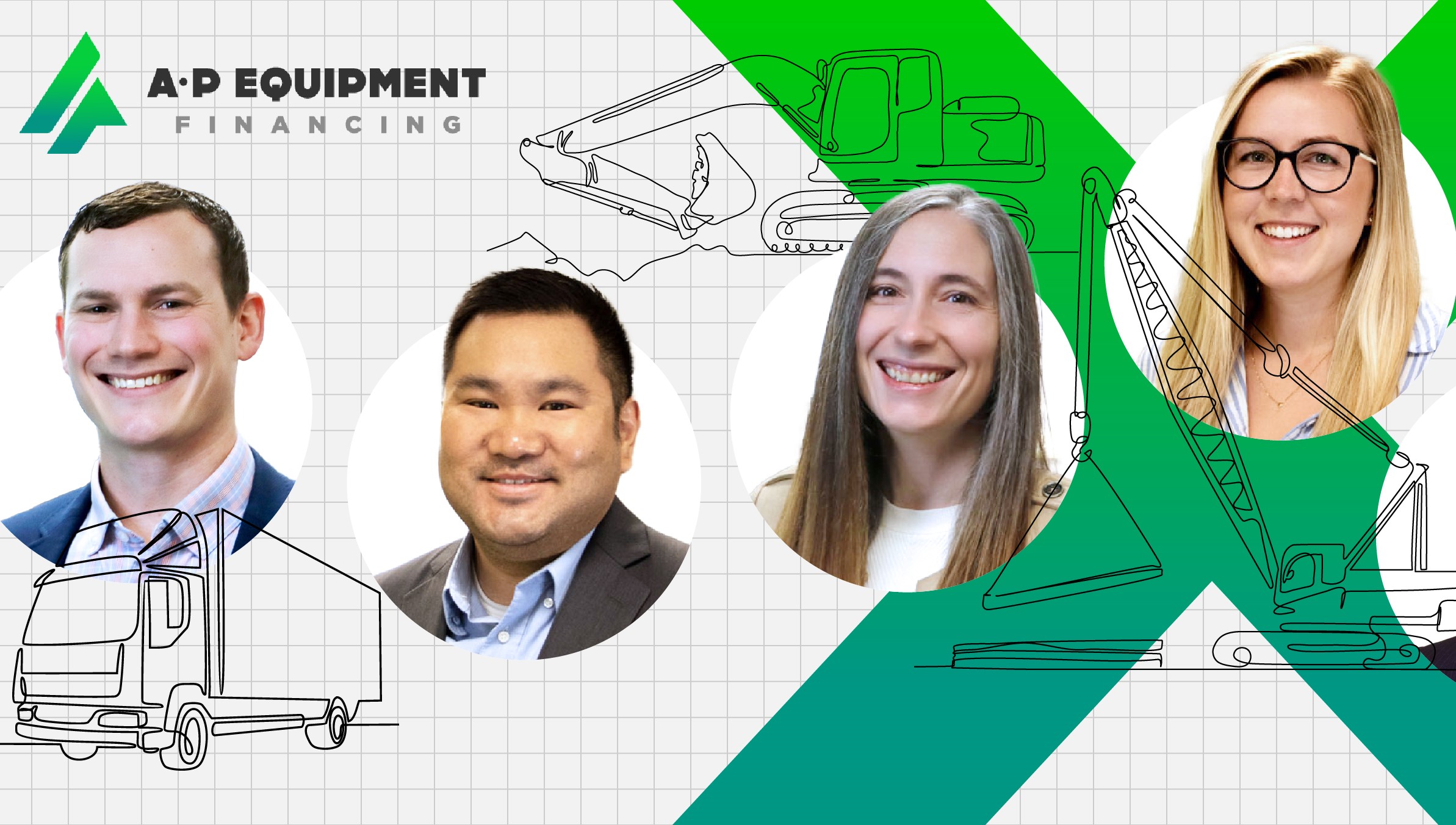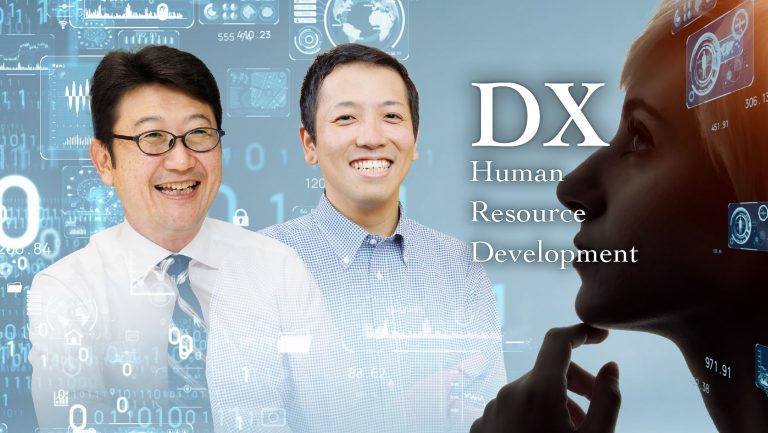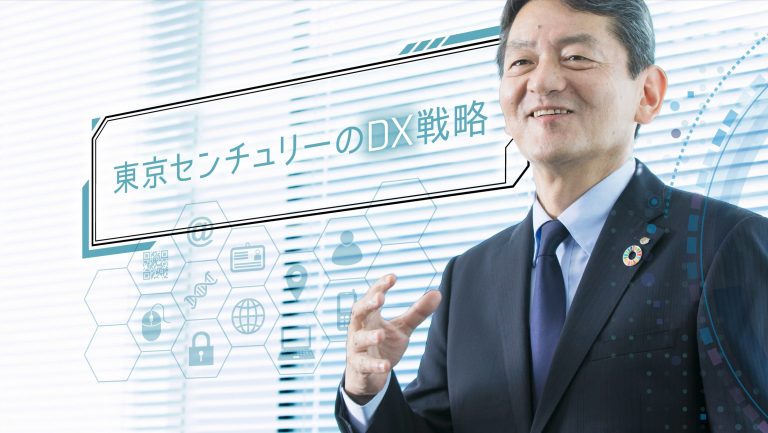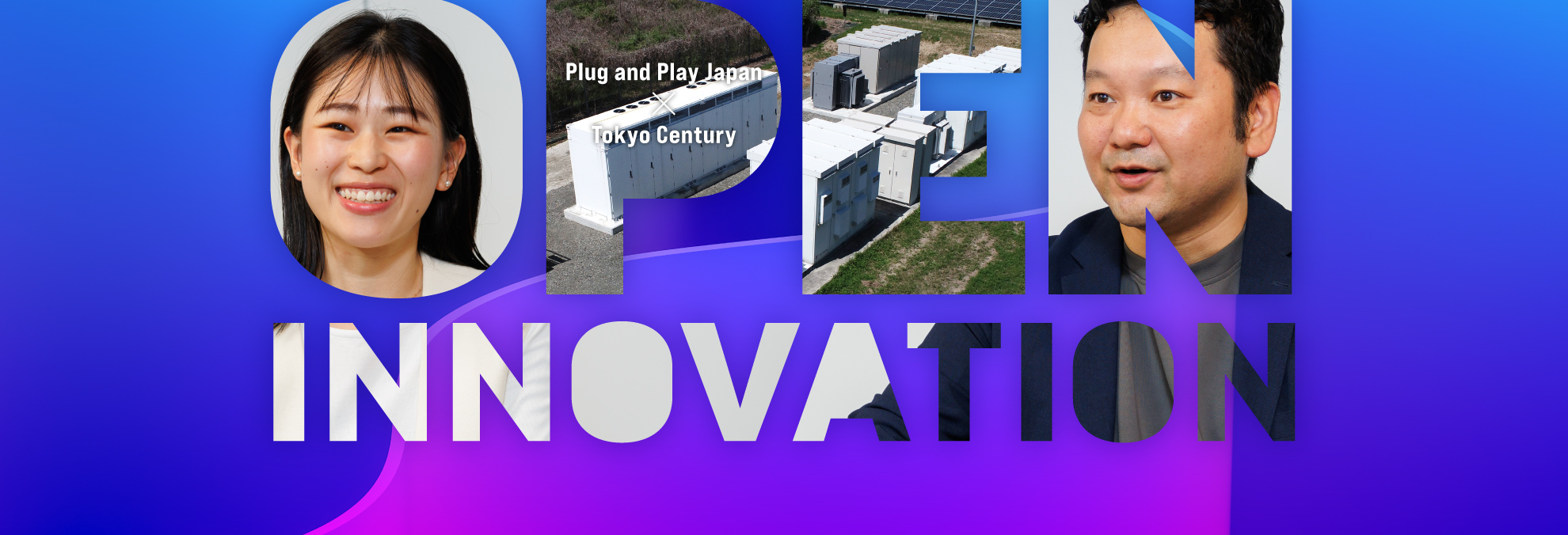
Open Innovation at Work: Increasing the Value of Our Solar Power Generation Business through Collaboration with a Startup
—Plug and Play Japan × Tokyo Century
Feb 20, 2025
Collaboration with startups is essential to accelerate DX strategies. Part 1 of this article presents a conversation on open innovation involving Mr. Arai and Ms. Omura of Plug and Play Japan (PnPJ) and Mr. Takano of the DX Strategy Division of Tokyo Century.
Part 2 introduces a good example of how collaboration with a startup has brought about open innovation, which increased the value of existing businesses. A solar power plant in Arao City, Kumamoto Prefecture, managed by a consolidated subsidiary of Tokyo Century, is now able to more efficiently generate and sell electricity without waste after installing storage batteries in the plant. We spoke with Tokyo Century’s Mr. Shibuya and Ms. Komiya about the challenges they faced in operating the plant and how they resolved them, as well as how they have established a relationship with the startup.
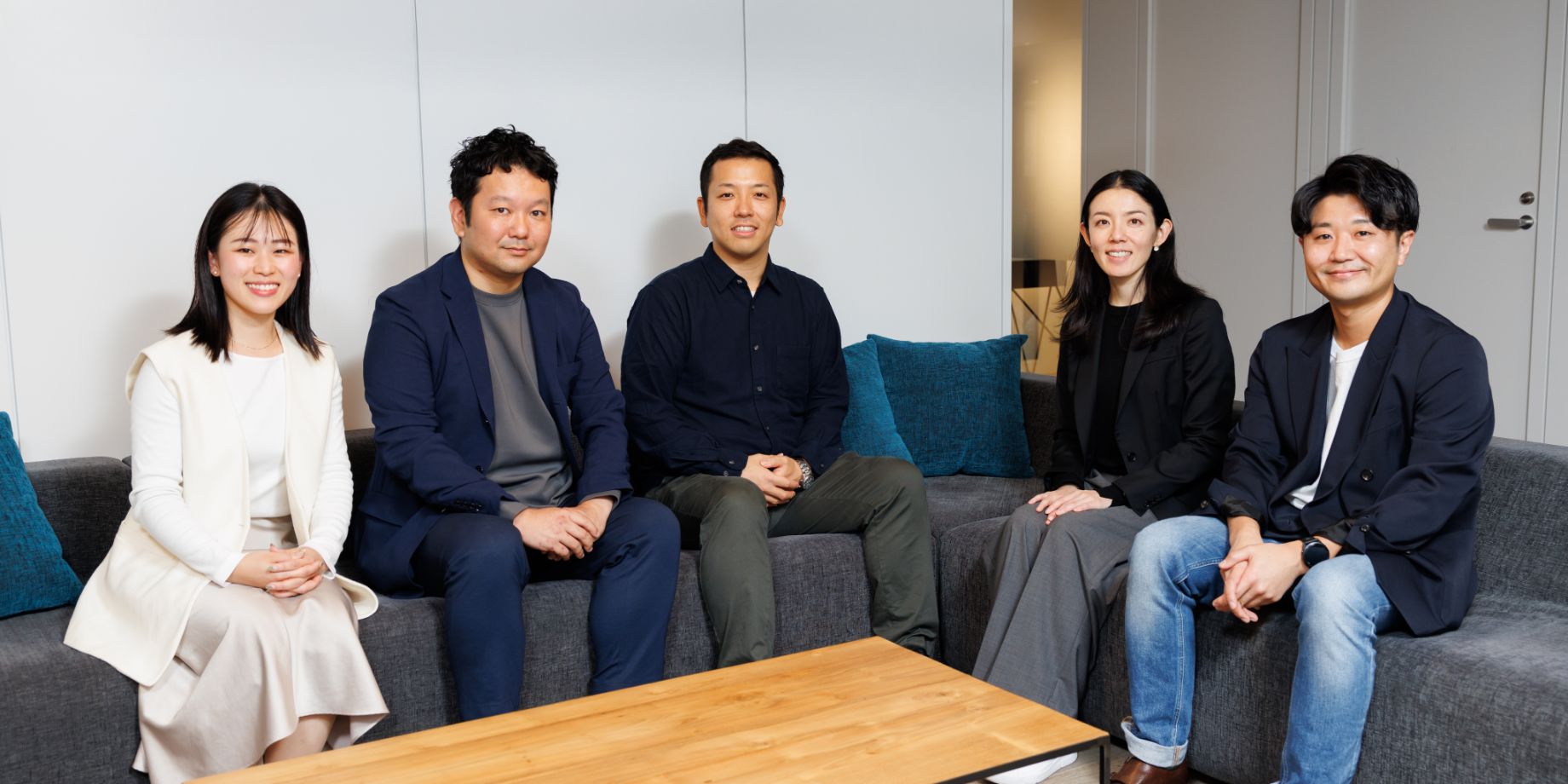
From left: Chika Komiya, Yudai Shibuya, and Shinsaku Takano of Tokyo Century, and Saki Omura and Yoshihiko Arai of PnPJ
Switching to FIP and Co-locating Storage Batteries through Collaboration with a Startup
—I understand that collaboration with a startup you met through Plug and Play Japan’s accelerator program has led to a good example of open innovation, which increased the value of existing businesses. Could you begin by telling us about that startup company?
Shibuya: The company is called Tensor Energy Inc. It develops and provides a cloud platform for power management and financial management, including for storage batteries, called Tensor Cloud, for companies engaged in renewable power generation. Mr. Takano of the DX Strategy Division introduced us to the company through PnPJ’s accelerator program, and we began working with them following a meeting and internal approval.
—Could you tell us about your collaboration with Tensor Energy?
Komiya: The company provides a system for operating a solar power plant equipped with storage batteries in Arao City, Kumamoto Prefecture. The plant has been in operation since 2015, and storage batteries were installed in June 2024. This is our first project for installing storage batteries in a power plant. This plant is in Kyushu, which is prone to output control*1 due to the long hours of sunlight and the more widespread use of renewable energy. In spring and fall, the weather is mild and less electricity is used during the day, so output control tends to be applied more easily.
Output control had been a major issue affecting the profitability of solar power plants. In addition to addressing this issue, we considered developing and expanding non-FIT*2 power plants and business operations after the FIT expired. We then decided to start a demonstration project for switching from the FIT scheme to the FIP*3 scheme and installing storage batteries in the power plant in Arao City, Kumamoto Prefecture.
However, as electricity sales under the FIP scheme change on a daily basis, the budget and actual management become far more complicated compared to FIT. In addition, planned power generation and contract amounts must be submitted to external agencies in advance. While searching for ways to deal with new challenges, we determined that Tensor Energy’s Tensor Cloud offered the best solution, and we began to collaborate with them.
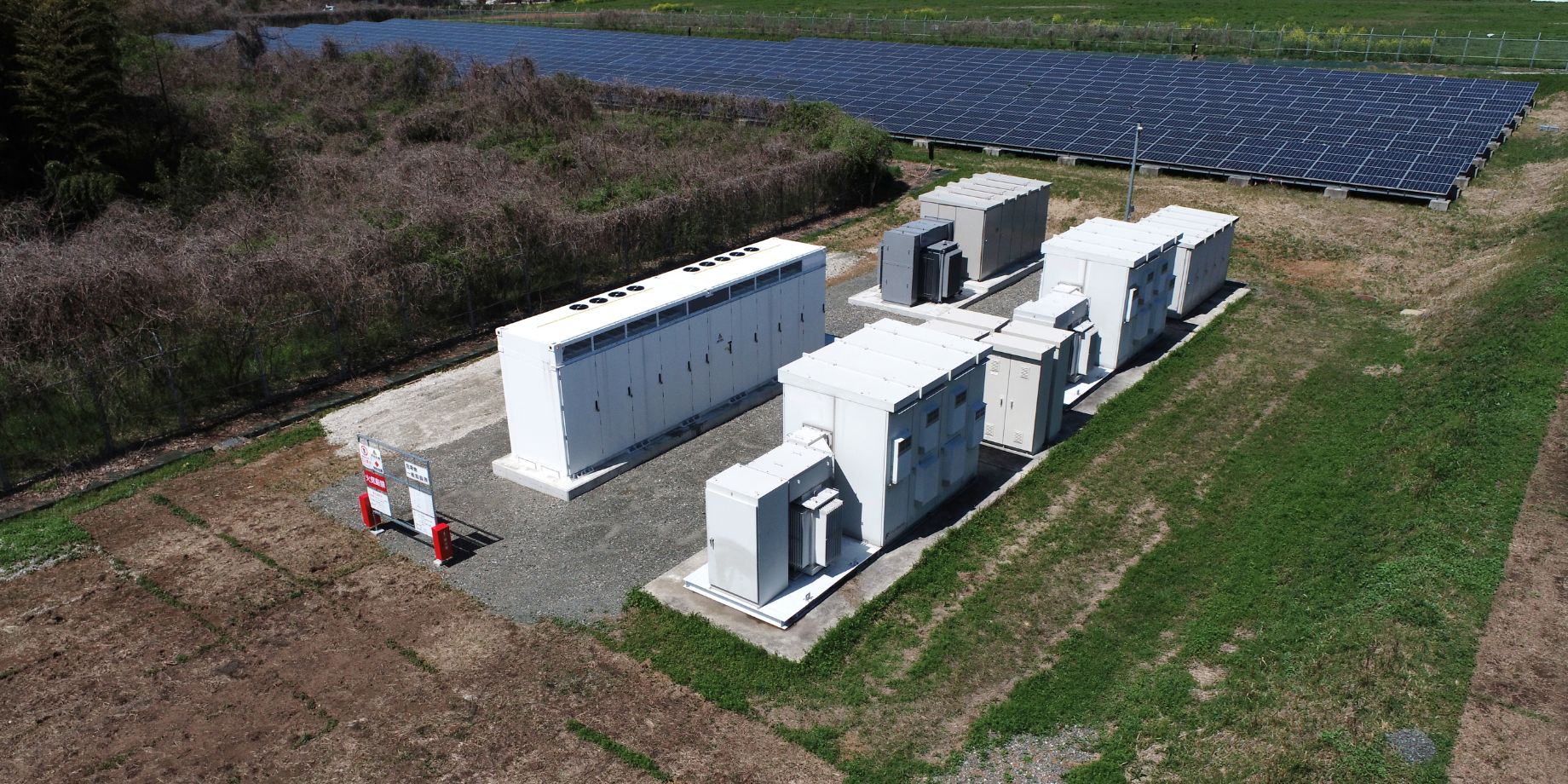
Storage batteries installed in the mega solar power plant in Arao, Kumamoto
*1 Power generation control that occurs when electricity is generated in excess of demand. With the recent progress in introduction of renewable energy, the supply and demand balance during periods of low demand is adjusted by suppressing the output of thermal power plants and using inter-regional interconnection lines. If the risk of excess electricity persists, output control of renewable energy is carried out. Output control tends to be particularly concentrated in spring (March to June) and fall (September to November) during milder weather with less frequent use of air conditioning, resulting in lower demand for electricity and the amount of electricity generated exceeding demand.
*2 Feed-in tariff is a scheme under which the government guarantees that electric power companies will purchase all generated electricity at a fixed price. However, the purchase period is set to 10 to 20 years depending on the size of the power generation facility.
*3 Feed-in premium is a scheme under which an additional amount is added to the purchase price as a premium on top of the base price based on market fluctuations.
Overcoming Hurdles to Winning Collaboration with Startups by Dispelling Concerns and Showing Enthusiasm
—Collaboration agreements between large companies and startups must face various hurdles. Could you explain how your management team responds?
Shibuya: Concerns certainly include the short histories and limited track records of startups as well as financial risks and the risk of changing from a business that generates stable cash flow under the FIT scheme to one with uncertain ability to generate cash. We were able to obtain approval for this collaboration because we comprehensively took into account that the installation of storage batteries in the solar power plant under the FIP system represented a pioneering case nationwide, as well as the benefits to be gained by the switch along with the startup’s technology to address unexpected burdens that might arise on site.
Komiya: While our collaboration with Tensor Energy started with a POC*4, the data submitted during the consideration phase was very accurate, which I think was a major boost. The numerical data may have convinced our management team.
*4 Proof of concept refers to a trial project to verify the feasibility and outcome of a new idea.
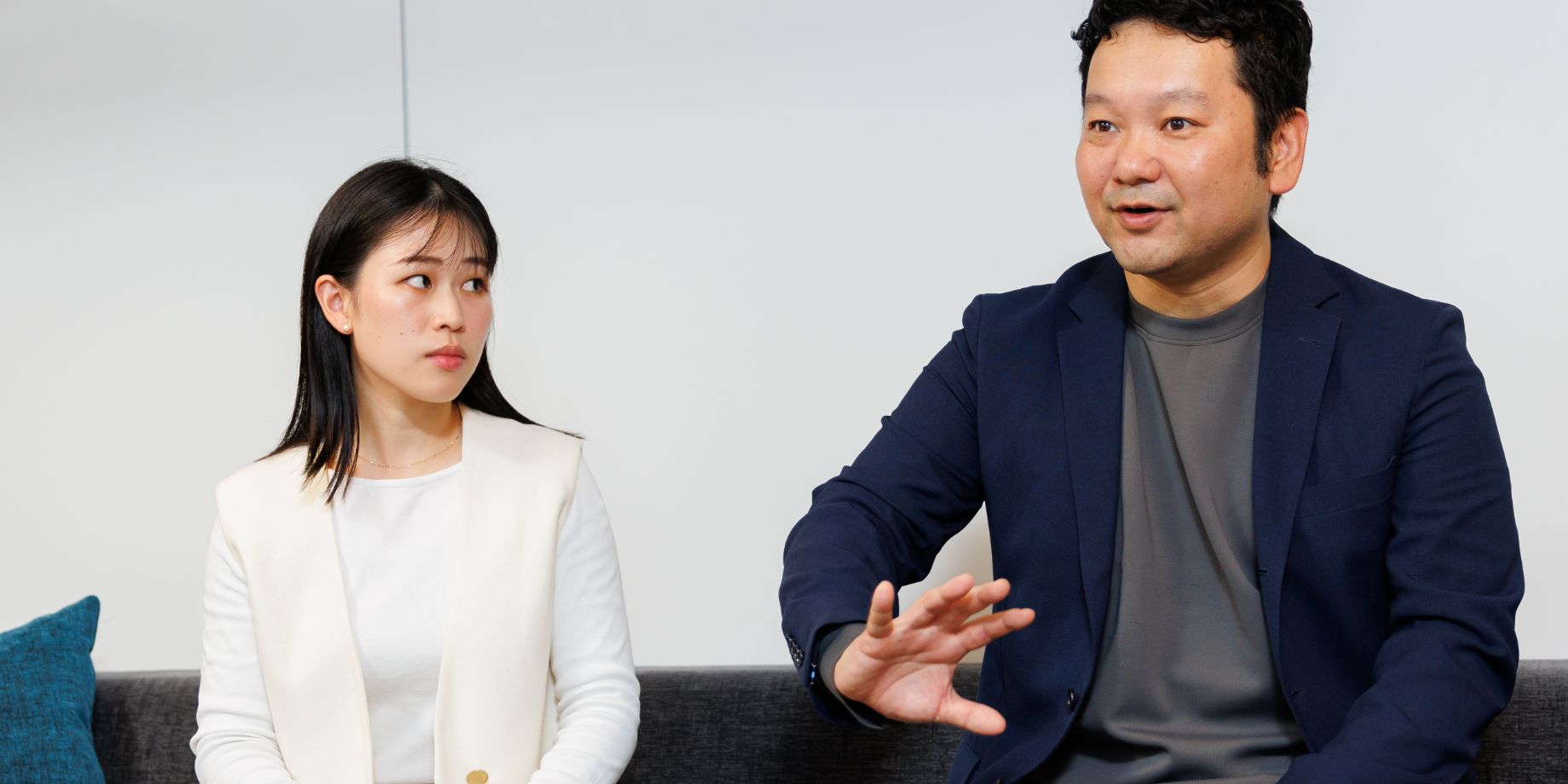
Shibuya: We’re seeking technologies only startups can provide, so we’d be delighted if they could share their enthusiasm with us.
Realizing Open Innovation to Increase the Value of Existing Businesses
—How did the two companies achieve open innovation?
Komiya: This project was intended to further increase the value of a power plant that had been in operation for some time. As mentioned earlier (see Part 1), this was a new challenge for us to create innovation by combining the knowledge of our existing power plant business with the knowledge of Tensor’s technological development capabilities, rather than starting from scratch.
For example, when developing new functions for Tensor Cloud, even the smallest details could be discussed, such as the logic of creating a recharge/discharge schedule after the results of a contract in the electricity market and settings to prevent operational oversights. We were also able to incorporate feedback from the user’s perspective.
—How do you assess the outcome of open innovation?
Komiya: Through frequent discussions, we were able to accumulate new knowledge and expertise about the mechanism and system of electricity trading, which have become a great asset for both our company and me personally. I was always so excited that I could hardly wait for our weekly meetings. I’ll never forget the process of building something together or the elation I felt when we actually used the completed version. I appreciate the significance of open innovation, in that ideas are stimulated by gaining insight from people outside the company. I feel that the knowledge and experience I gained from this project can be applied to future developments.
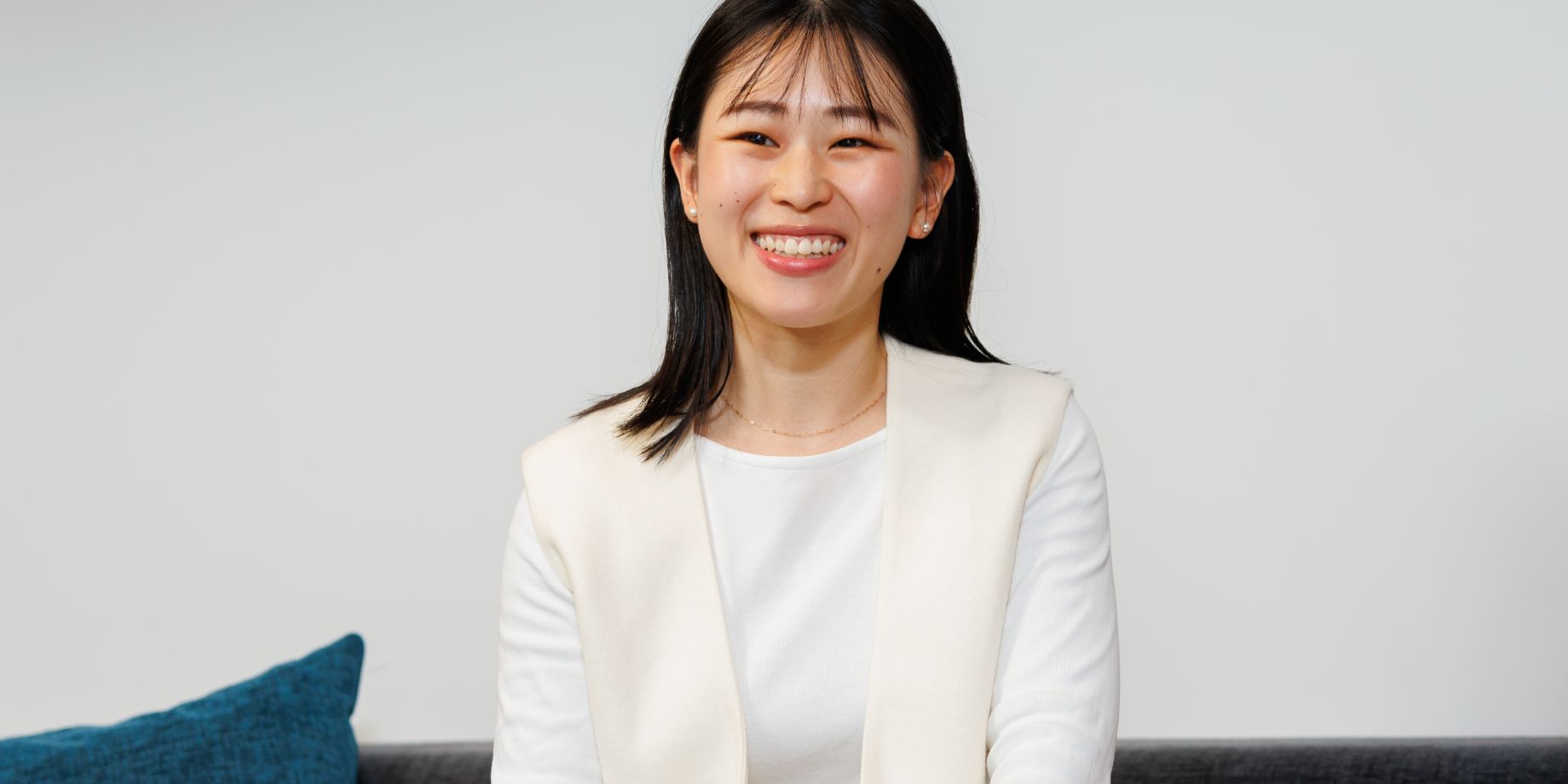
Komiya: I appreciate having had this experience while I’m still fairly young, and grateful to have met Tensor Energy.
Striving to Enhance Corporate Value by Promoting Digital Transformation and Green Transformation
—I think open innovation is a key element of green transformation (GX), which is also set forth in the basic policy of our medium-term management plan.
Shibuya: The Medium-Term Management Plan 2027 has set forth Tokyo Century Transformation (TCX) as the basic policy, along with main initiatives including GX and digital transformation (DX). These transformations represent the two axes for realizing the theme of “Transform Ourselves and Bring About Change.”
Through interaction with PnPJ members, I’ve learned that a lot of startup companies are focusing on developing technologies and building new business models for carbon neutrality. So we’d like to continue to expand our growth areas in the environmental infrastructure business from a long-term perspective while also considering M&A and investment opportunities.
—Thank you very much. Finally, could you share your aspirations for the future?
Shibuya: We meet every month to exchange information with members of the DX Strategy Division, who are in charge of open innovation. One mission of this division is to promote DX from two perspectives: improving operational efficiency and expanding business. The Environmental Infrastructure operating segment, meanwhile, has a mission to balance the resolution of social issues and organizational growth in the environmental infrastructure business. So rather than vertically approaching the work by business unit, I’d like to establish a cross-company structure to enhance the value provided to customers. Along with our PnPJ counterparts, we’ll closely monitor the trends of startups to create innovations that contribute to the future by combining existing knowledge with other existing knowledge.
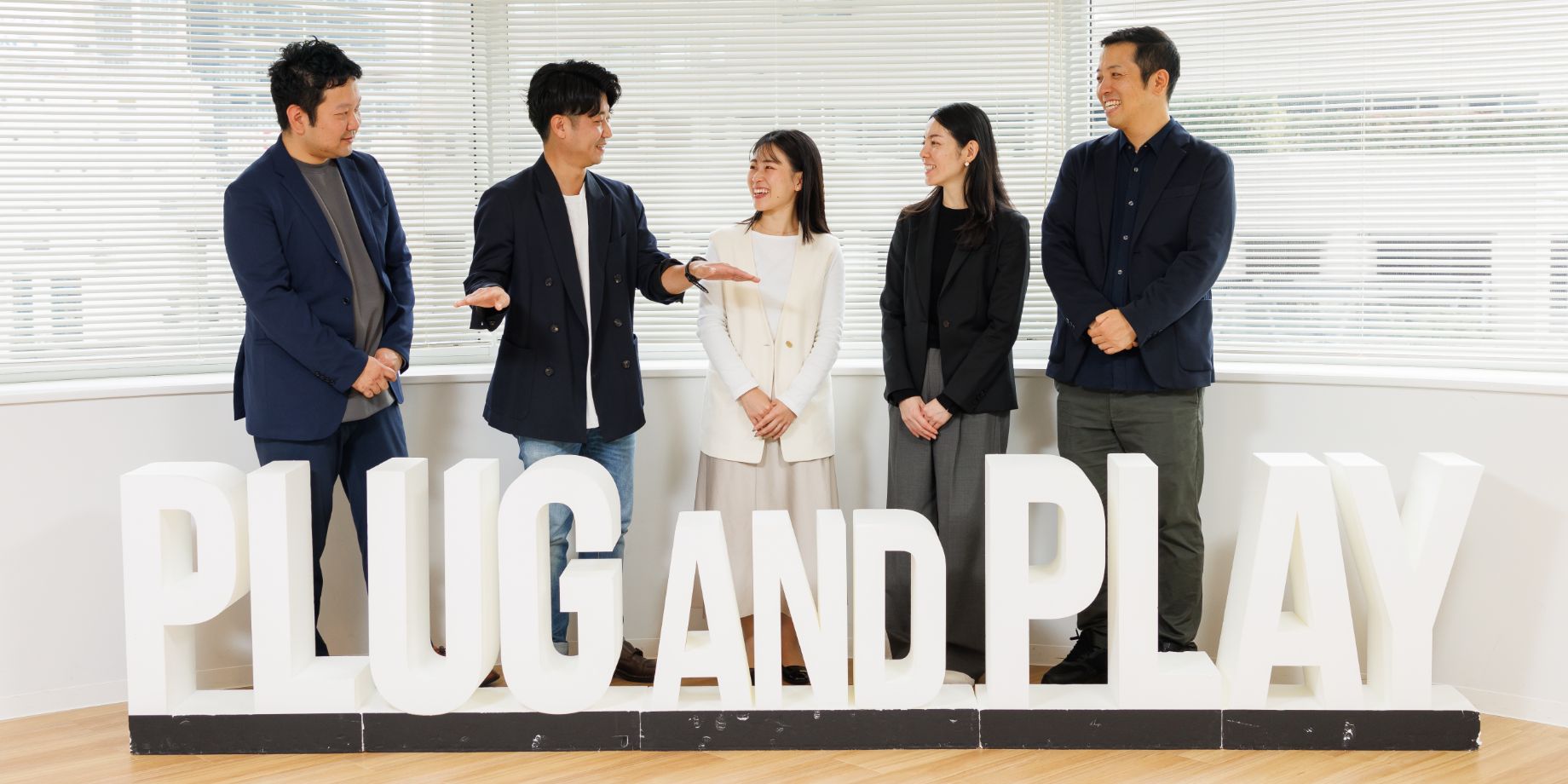
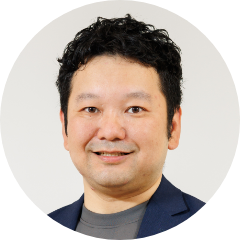
Yudai Shibuya
Manager, GX Business Promotion Office, Environmental Infrastructure Strategic Planning Division, Tokyo Century Corporation
Joined the company in 2021. He is in charge of planning and managing partner strategies for the environmental infrastructure business, including investment in related business operators.

Chika Komiya
Business Management Office, Environmental Infrastructure Business Division II, Tokyo Century Corporation
Joined the company in 2021 as a new graduate. Since 2024, she has been primarily responsible for the operation and management of a solar power plant (in Arao City, Kumamoto Prefecture) in collaboration with Tensor Energy Inc. She is a Class 4 hazardous materials officer qualified to handle petroleum products (including lithium-ion storage batteries).
Note: The contents of the article and the position titles are current as of the date posted.
RECOMMEND ARTICLES
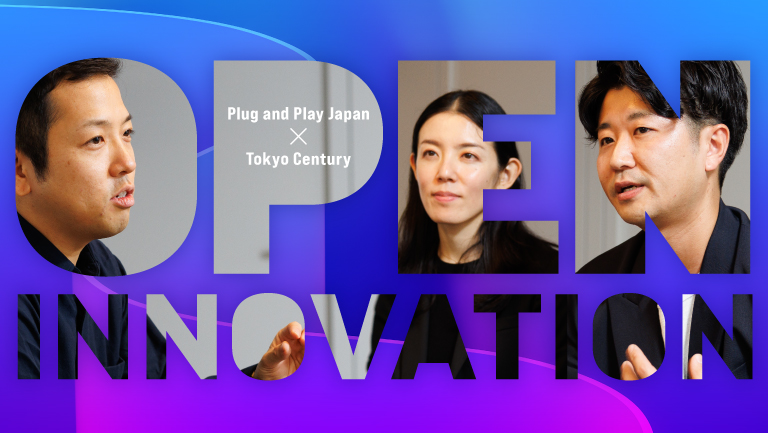
—Plug and Play Japan × Tokyo Century
Feb 19, 2025
Collaboration with s…
